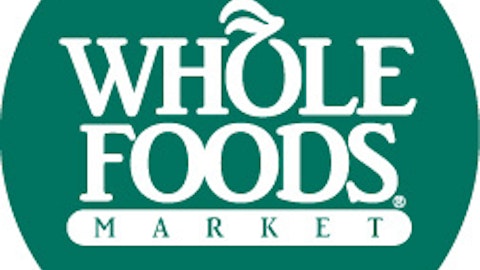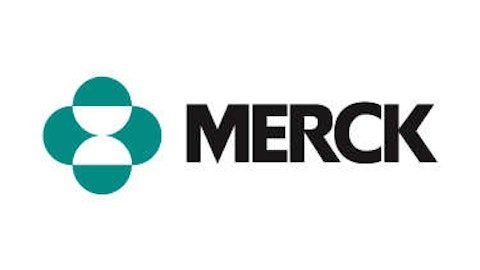But in addition to Whole Food’s, United Natural has several other growth opportunities.
The company is finding new customers such as institutional food service provides and small grocers. United Natural is also poised to benefit as traditional supermarkets like Safeway and The Kroger Co. (NYSE:KR) expand their organic and natural food offerings.
The company is also ramping up its international expansion. In 2010, SunOpta, Inc. (USA) (NASDAQ:STKL) sold its Canadian food distribution business to United Natural. United is now focused on expanding its Canada operations with a sales target of $500 million or 10% of its total sales.
For stingy investors, United Natural may also present a cheaper alternative. Whole Food’s and United Natural are priced at 35 and 25 times trailing earnings respectively.
Private label is here to stay
During the recession, Whole Food’s expanded its selection of cheaper, private label brands as consumers traded down. Today, store brands account for a large 11% of sales.

What’s noticeable is how little this has changed since the recession. In spite of an improving economy, customers are sticking to cheaper private labels.
I noticed the same trend when skimming through The Kroger Co. (NYSE:KR)’s and Safeway’s annual reports.
This means two things for investors:
First – higher margins for retailers now that they’re cutting out the middlemen.
Second – brands don’t matter anymore (or at least less). This spells big trouble for some companies like Kellogg Company (NYSE:K), The Procter & Gamble Company (NYSE:PG), and General Mills, Inc. (NYSE:GIS).
New customers driving growth
In 2012, Whole Food’s same store sales increased 8.8%. But it was interesting to see the breakdown.
“…we saw our identical store sales breakout move toward approximately 80% transaction count and 20% basket size…Basket size is partially impacted by our growth in new customers, who tend to have a smaller average basket size.” Whole Food’s 10-K
While existing customers are increasing their basket size, most of the growth is coming from new customers who are just trying organic foods for the first time.
That represents a huge opportunity to get these customers to buy more and higher priced products. This also indicates that Whole Food’s Market (NASDAQ:WFM) still has a long growth runway in exiting markets.
Stores are getting smaller
Whole Food’s has cut the size of its new stores down significantly.
In 2008, the company’s average store was a 49,000 square feet behemoth. Today, new stores are 25% smaller and cost 35% less to open.

Why might Whole Food’s be doing this. Again several reasons:
First – smaller stores are better suited for secondary markets where the company sees most of its expansion opportunity.
Second – smaller stores are cheaper to operate with fewer employees and services.
Third – limited shelf space means only the best selling products will be stocked increasing profitability.
Foolish bottom line
While I have previously been bullish on the company, subtle details in the company’s 10-K continue to backup the bull thesis.
Whole Food’s Market (NASDAQ:WFM) is refining it’s growth strategy, increasing the likelihood that it will be able to hit its 1,000 store target. The fact that sales are still being driven by new customers means the company should be able to sustain a high rate of same store sales growth for longer than expected.
Whole Food’s potential may be much larger than investors anticipate.
The article Five Things I Learned Reading Whole Food’s Annual Report originally appeared on Fool.com.
Robert Baillieul has no position in any stocks mentioned. The Motley Fool recommends Whole Foods Market. The Motley Fool owns shares of Whole Foods Market. Robert is a member of The Motley Fool Blog Network — entries represent the personal opinion of the blogger and are not formally edited.
Copyright © 1995 – 2013 The Motley Fool, LLC. All rights reserved. The Motley Fool has a disclosure policy.





